Разделы презентаций
- Разное
- Английский язык
- Астрономия
- Алгебра
- Биология
- География
- Геометрия
- Детские презентации
- Информатика
- История
- Литература
- Математика
- Медицина
- Менеджмент
- Музыка
- МХК
- Немецкий язык
- ОБЖ
- Обществознание
- Окружающий мир
- Педагогика
- Русский язык
- Технология
- Физика
- Философия
- Химия
- Шаблоны, картинки для презентаций
- Экология
- Экономика
- Юриспруденция
Freezing lakes and lake ice
Содержание
- 1. Freezing lakes and lake ice
- 2. Subglacial lakes
- 3. Epiglacial lakesAt Lasarevskaya station, Dronning Maud LandVatnajökull, Iceland
- 4. Supraglacial lakes on DML
- 5. Supraglacial lakesLakes (’wetlands’)grow in blue ice spotsSolid
- 6. Topics and motivationLake structure (vertical/lateral)Surface mass and
- 7. Supraglacial lakes in DMLlee side, separation zoneBlue
- 8. 15 January 200573°02.8’S 13°28.7’W200 m above sea level400 m below top of nunatak 15 January 2011
- 9. FieldworkProfiling the lake structureIce and water samplesPumping
- 10. DML supraglacial lakes are seasonalForm in November
- 11. Soft, bog-like boundary zoneThe hydraulic conductivity in
- 12. SampleProfileProfiling of the lakeCover (0-30 cm)Water body
- 13. Evolution of the vertical profile2014 – 2015: stophere end of December
- 14. Qs0
- 15. Heat and mass budget of Lake SuvivesiRadiation
- 16. Supraglacial lakes: temperature structureNegative radiation balance at
- 17. Albedo 0.4 – 0.6
- 18. Stability accounted for(significant)
- 19. Слайд 19
- 20. PAR scalar irradiance at 60 cm depth2500 unitsCorrespondto planarIrradiancepower of50 W/m2
- 21. Three summers2004-05 and 2010-11Surface ice layer 0
- 22. Scaling of lake bodyGrowth (H)k – light
- 23. Ice growthMean temp -15ºC, 10 months: 2
- 24. Water quality and ecosystems of supraglacial lakesUltraoligotrophic
- 25. Слайд 25
- 26. ConclusionsSupraglacial lakes presently seasonal in DMLNet liquid
- 27. Скачать презентанцию
Слайды и текст этой презентации
Слайд 1Freezing lakes and lake ice
Introduction
(2) Growth and melting
(3) Proglacial lakes
(4)
Lake ice climatology
Слайд 5Supraglacial lakes
Lakes (’wetlands’)grow in blue ice spots
Solid body melts
to a lake, inversely as in wintertime boreal lakes
Formation and
closure solved with a 2-phase modelLayered structure due to radiation absorption by sediments
Ice cover (0-10 cm)
Water body 120+x cm)
Interim layer 20 - 20+x cm
Slush, sedment particles
20 – 20+x cm
Hard glacier ice
Слайд 6Topics and motivation
Lake structure (vertical/lateral)
Surface mass and heat balances
Thermodynamics
Conclusions
Absorption of
solar radiation ~ 5 times more than for snow cover
Seasonal
[stable] perennial [unstable]Water very clean, ultra-oligotrophic life in extreme conditions
Study Lakes at nunataks
Basen (Lake Suvivesi, main lake)
Plogen and Fossilryggen
(comparisons), 30 and 50 km
distance from Basen
Слайд 7Supraglacial lakes in DML
lee side,
separation zone
Blue ice surface
Blue ice
spots (1% of surface area)
Negative surface
mass balanceOften in the vicinity of nunataks
Слайд 815 January 2005
73°02.8’S 13°28.7’W
200 m above sea level
400 m below
top of nunatak
15 January 2011
Слайд 9Fieldwork
Profiling the lake structure
Ice and water samples
Pumping tests (hydraulic conductivity)
Radiation
balance
Weather station at lake and at Aboa on Basen
Слайд 10DML supraglacial lakes are seasonal
Form in November – December
Lake
Suvivesi max extent 5 km2
Lake Suvivesi max depth 1.5 –
2 mClose in April – May Seasonal
Change to perennial ?: Residual subsurface water pocket Volume increase year by year Catastrophic breakage
Слайд 11Soft, bog-like boundary zone
The hydraulic conductivity in the bog varied
from
0.25 to 30 cm s-1 . By a controlled experiment,
the
conductivity of closely packed slush mass wasobtained as 6.3 cm s-1 .
Margin ‘bog’
Core lake
Слайд 12Sample
Profile
Profiling of the lake
Cover (0-30 cm)
Water body
(max 120+x cm)
Internal
ice layer (20 - 20+x cm)
Slush, particles (20 – 20+x
cm)Hard glacier
Слайд 15Heat and mass budget of Lake Suvivesi
Radiation balance dominant
Solar altitude
40 deg at midsummer noon
Clear sky typical
Light attenuation depth
1 m (strong scattering)Surface normally covered by thin ice
Sublimation 5 – 10 cm in summer
Net radiation at surface close to zero
Radiation into ice >> 0
Sensible heat flux around zero (T_air < T_surface)
Latent heat flux < 0 and significant, dry air
Liquid precipitation very rare
Слайд 16Supraglacial lakes: temperature structure
Negative radiation balance at surface (cold skin
phenomenon)
Temperature increases down to warm layer light penetration and
thermal diffusion Heat loss to deep ice from lake bottom, stable and small, 1 – 5 W/m2
Lake
body
Слайд 21Three summers
2004-05 and 2010-11
Surface ice layer 0 – 10 cm
at min ( surface heat balance ~ 0)
Liquid water layer
production ~ 1 m (2 cm/day or 60 W/m2 solar power)2014-2015 (cold)
Surface ice layer 20 – 30 cm at min ( surface heat balance < 0)
Liquid water layer production ~ 1/2 m (1 cm/day or 30 W/m2 solar power)
Difference: 2014 – 15 higher reflectance and more windy weather
Слайд 22Scaling of lake body
Growth (H)
k – light atten. depth
Q* -
sunlight to ice
t – length of summer
n0 –porosity of ice
when strength lostrL – latent heat of freezing
Closing (h)
S – freezing-degree-days
a thermal conductivity, latent heat, porosity
b ice-air heat transfer
Surface ice layer:
h0=kT0/Q0(T0)
Слайд 23Ice growth
Mean temp
-15ºC, 10 months: 2 m growth
Bottom growth:
flux ~ 3 W/m2 1 mm/day or 30 cm/10
monthsIn present climate lakes close up.
cold deep ice
cold winter air
Month (Jan – Dec)
Слайд 24Water quality and ecosystems of supraglacial lakes
Ultraoligotrophic
Conductivity < 10
mS/cm (25°C)
Phytoplankton < 10 mg/m3
Lakes have own ecosystem overwintering in
the iceLight well available in summer (snow-free surface)
Phosphorus limiting factor
Species ~ 50 (global)
Macro algae
Skua
ciliates
Слайд 26Conclusions
Supraglacial lakes presently seasonal in DML
Net liquid water production ½
- 1 m layer, sensitive to turbulent heat fluxes
Possess ice
coverPotential winter ice growth 2 m
Light attenuation depth ~ 1 m ~ lake depth
Future efforts
All-year data (automatic station)
1-D to 3-D modelling
Lakes from different sectors of Antarctica (collaboration with AARI, SPb)

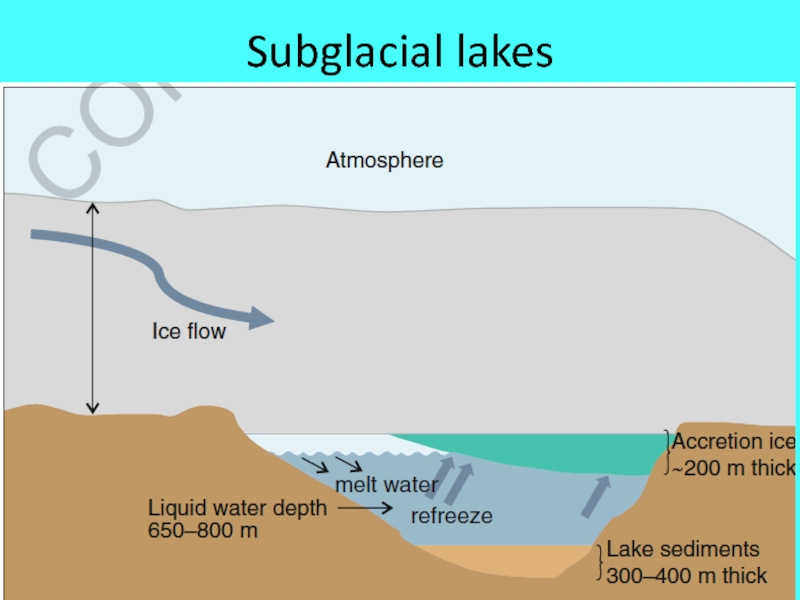

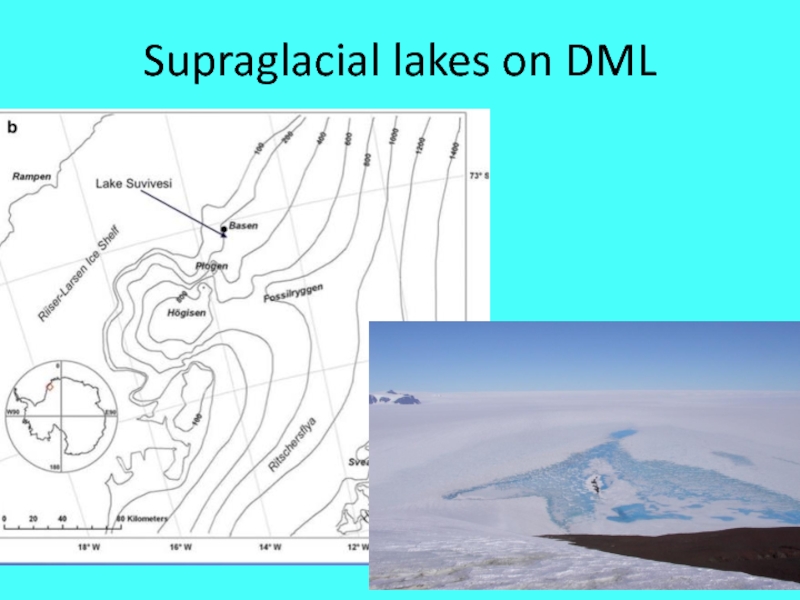



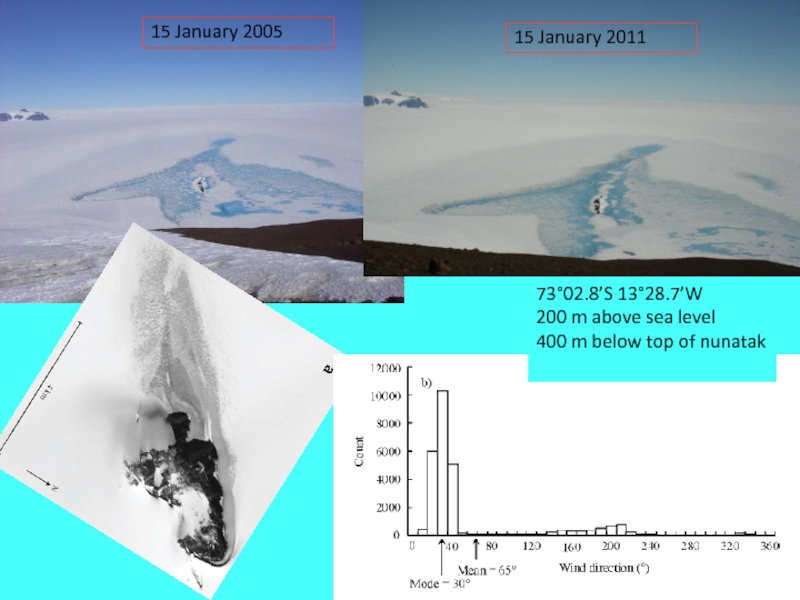
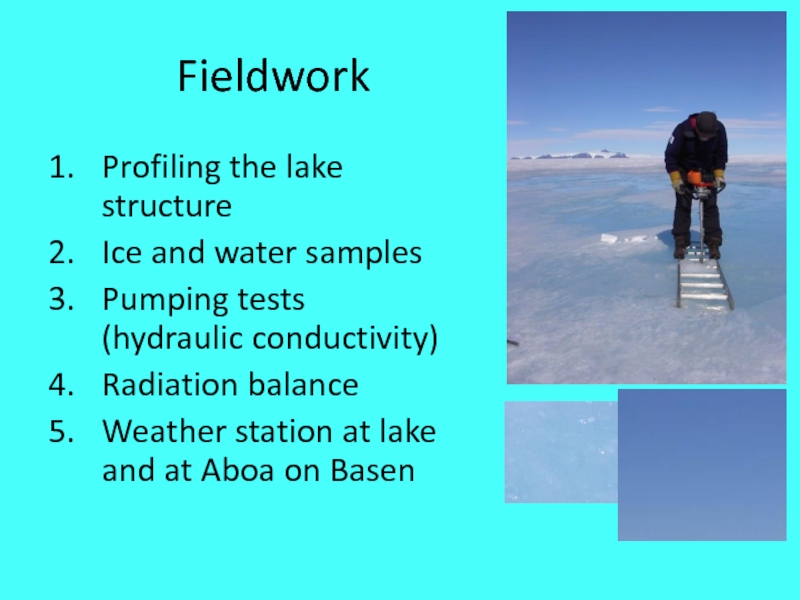
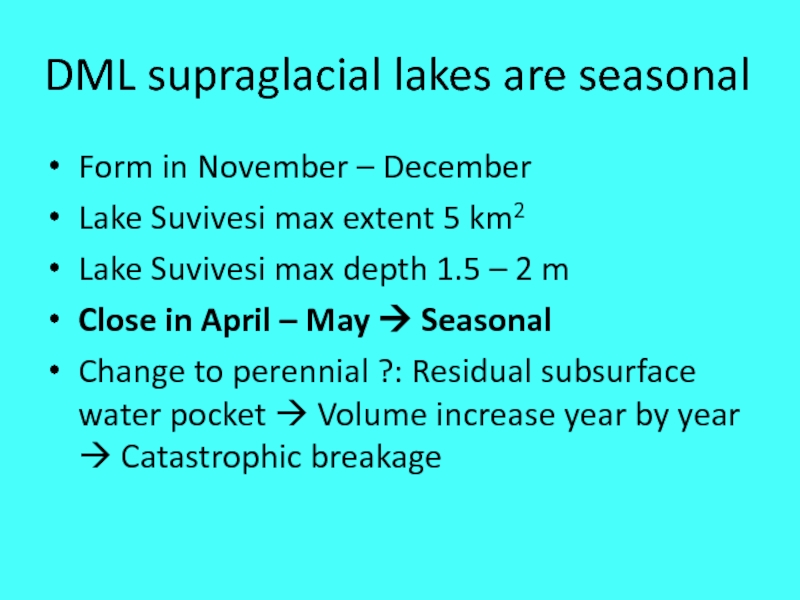
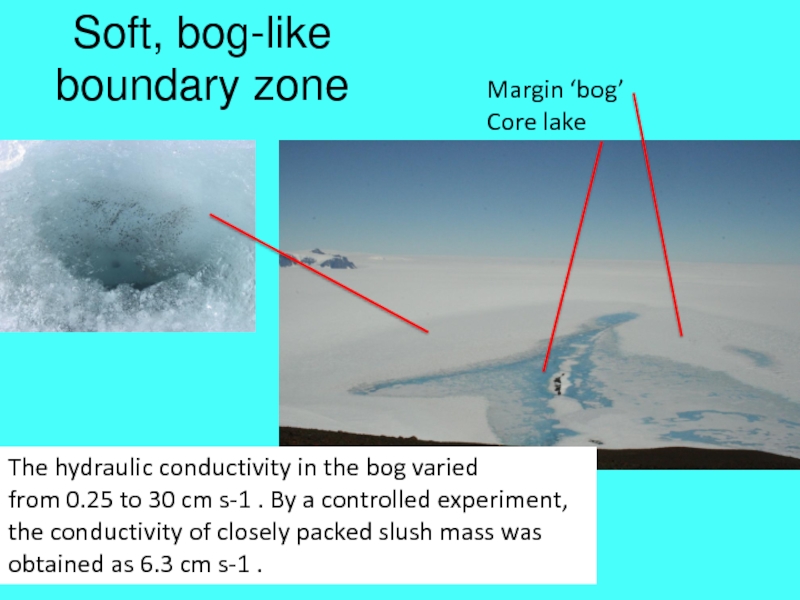
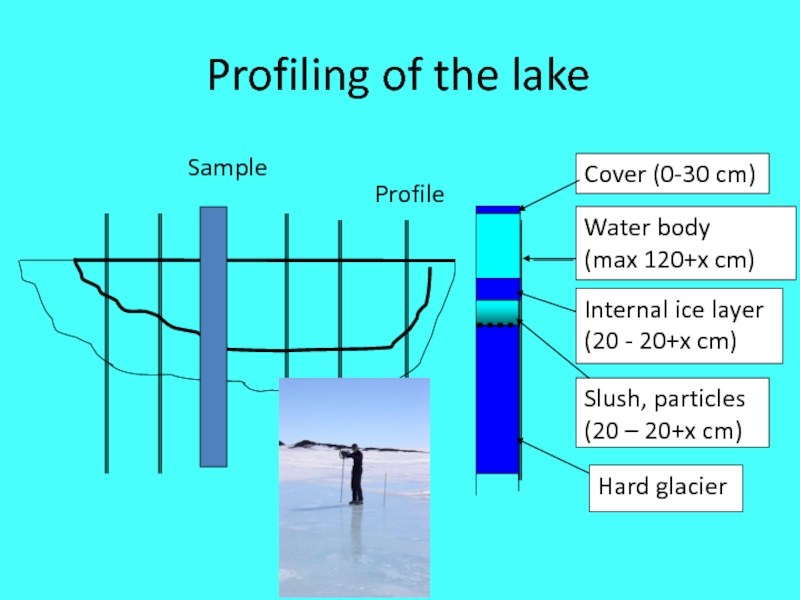
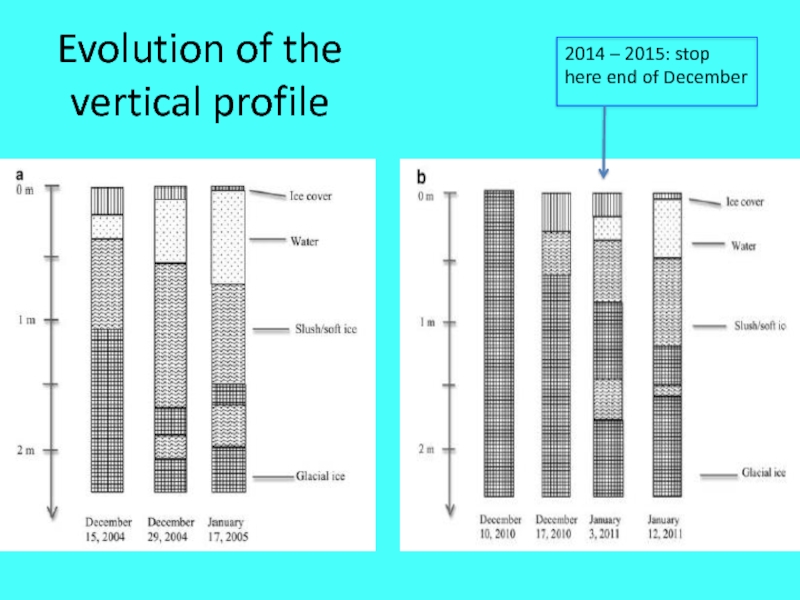
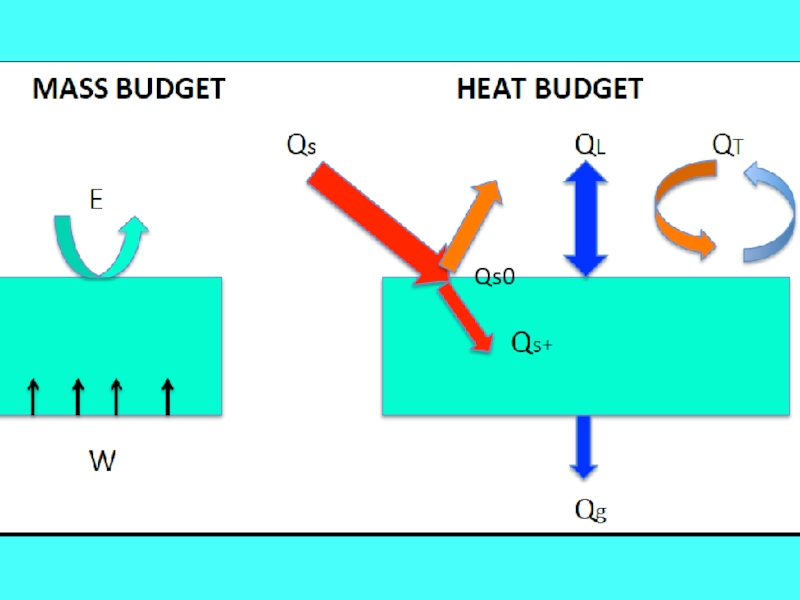

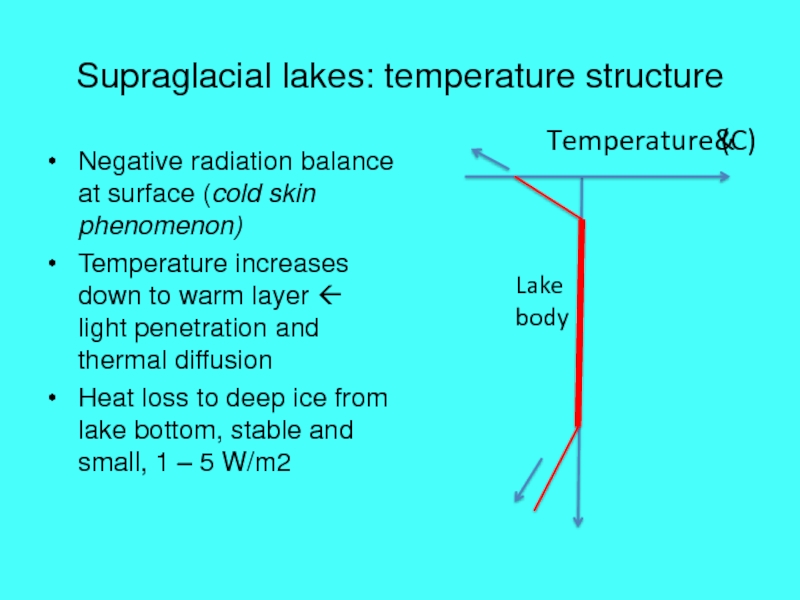
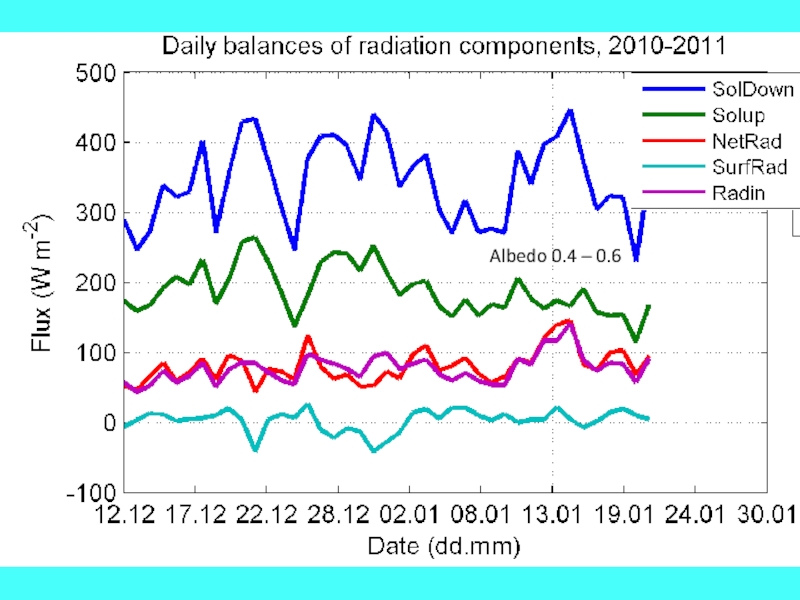
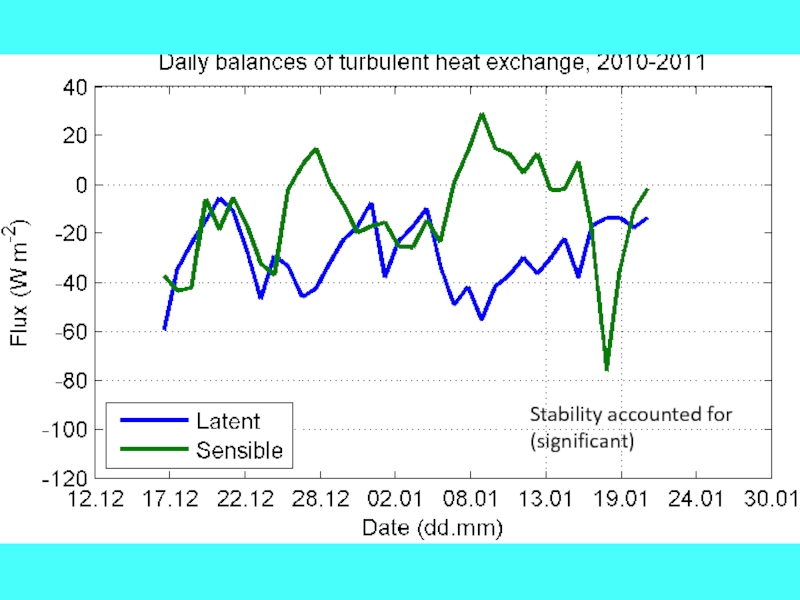
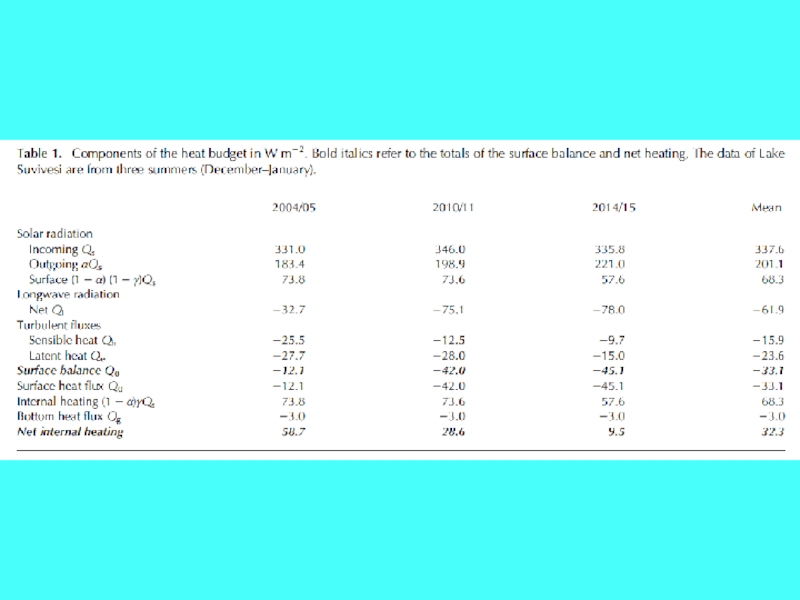


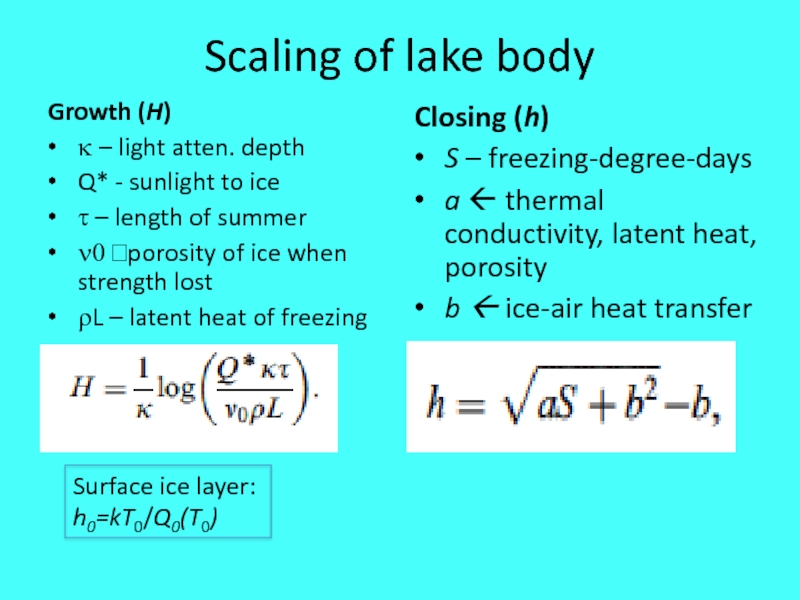
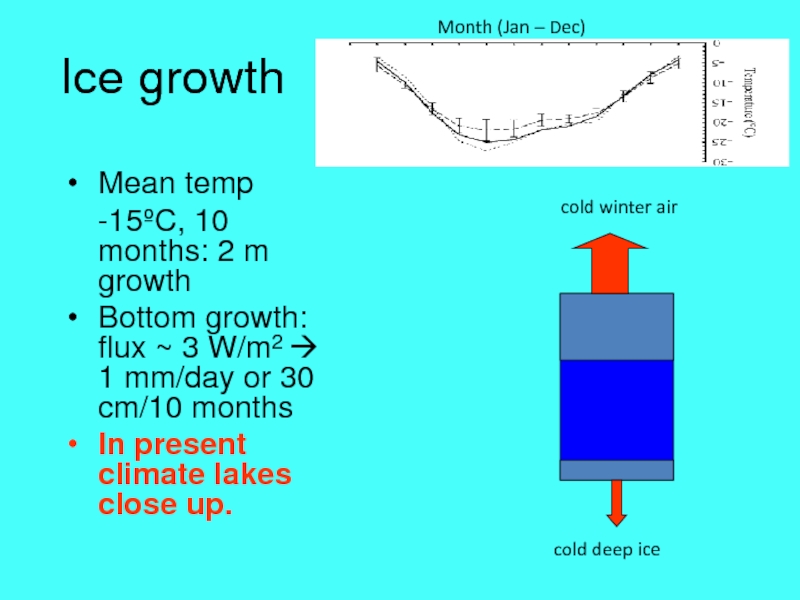

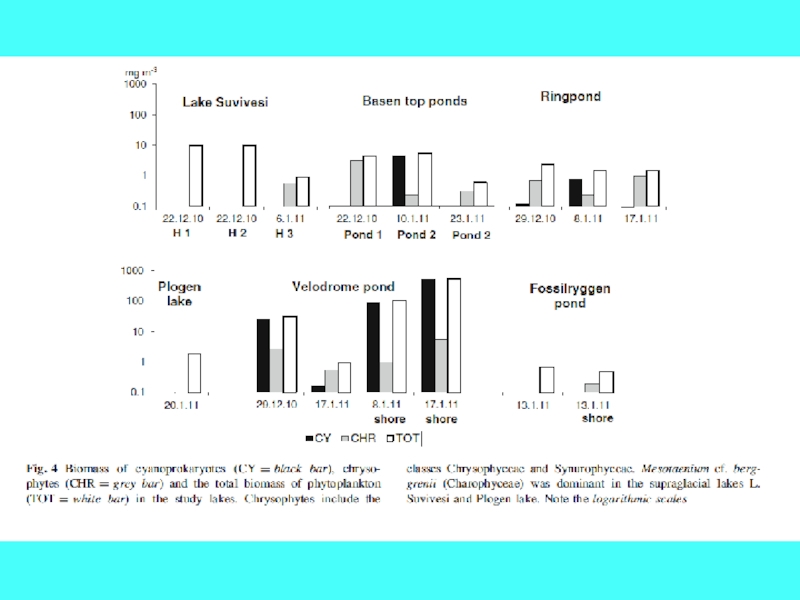
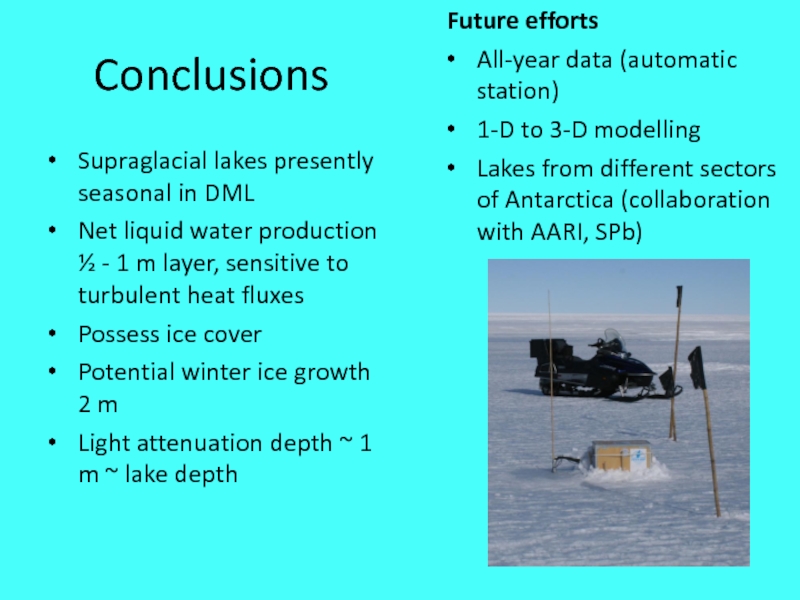
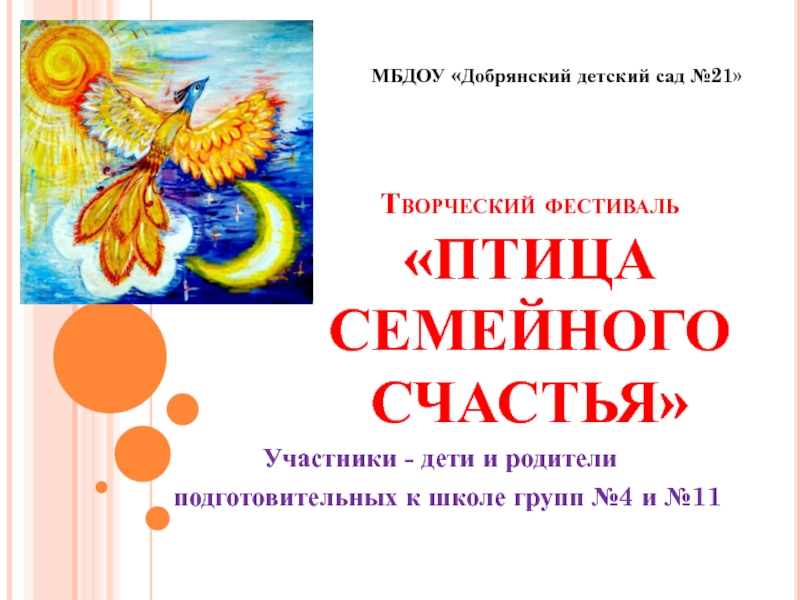

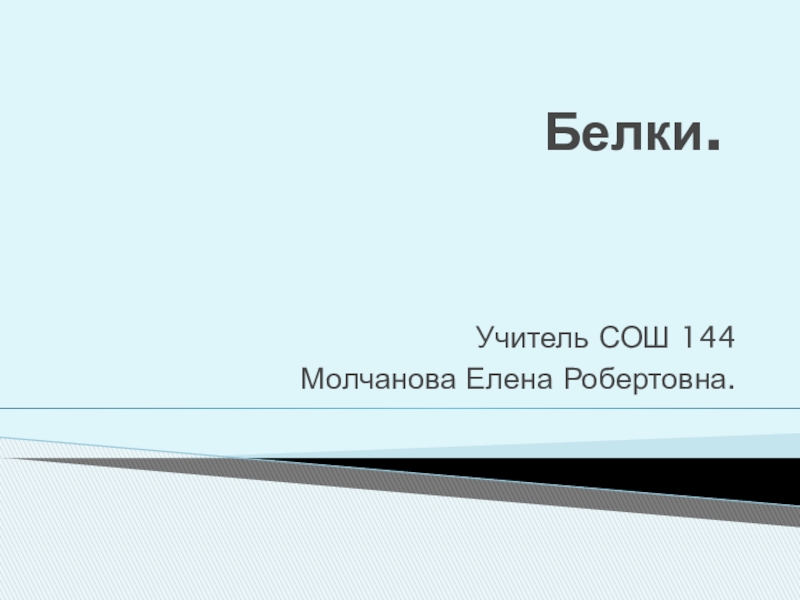

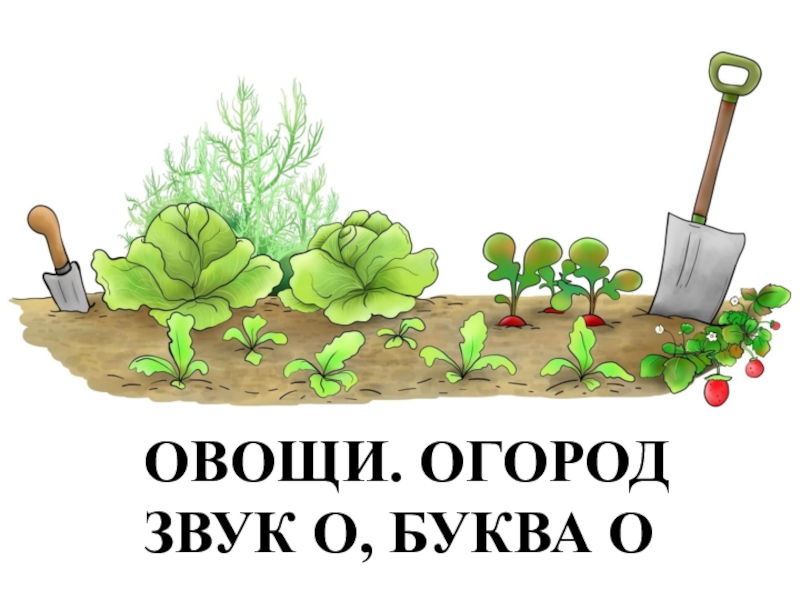


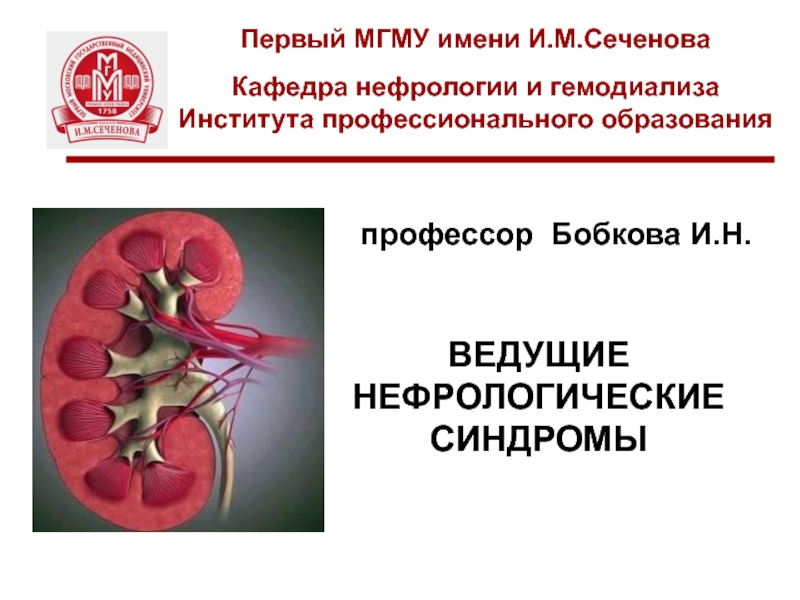
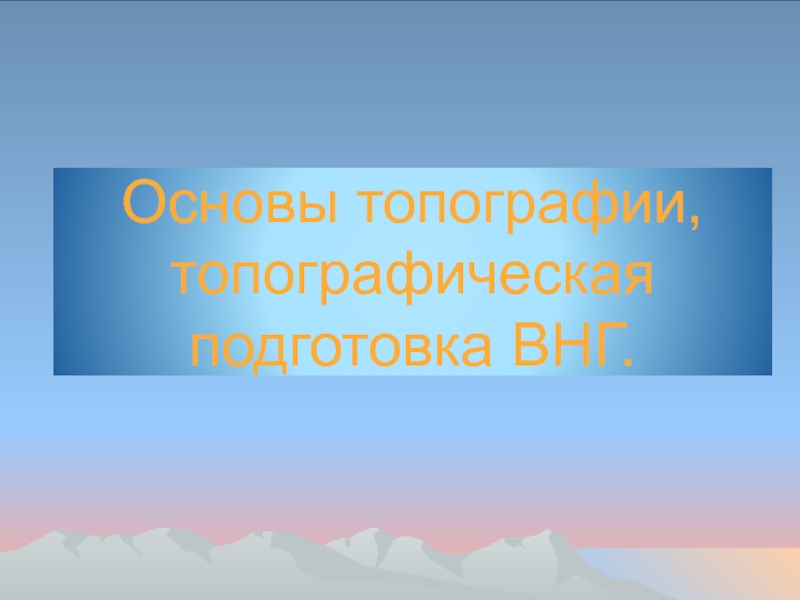
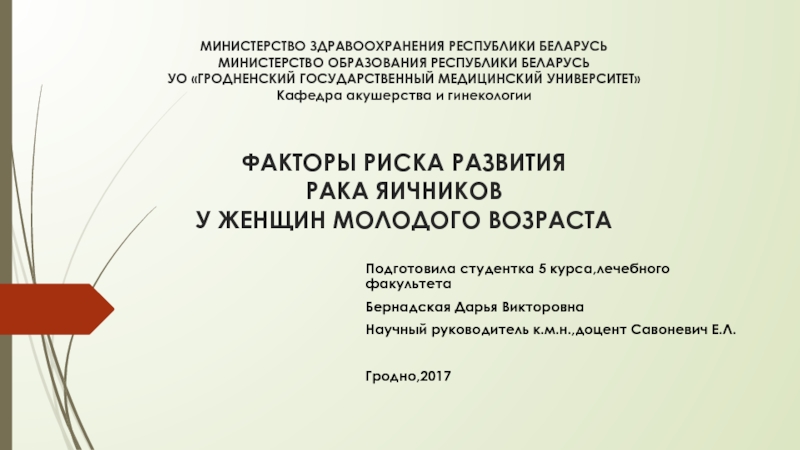
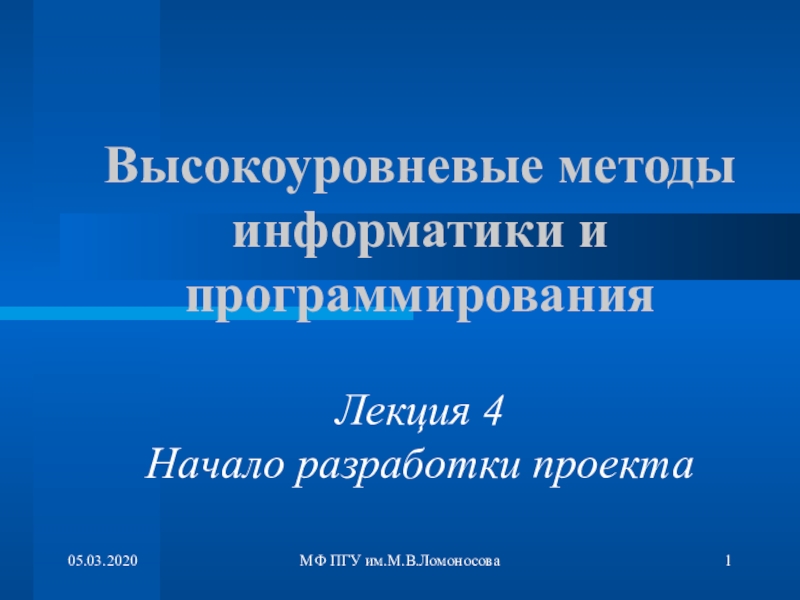
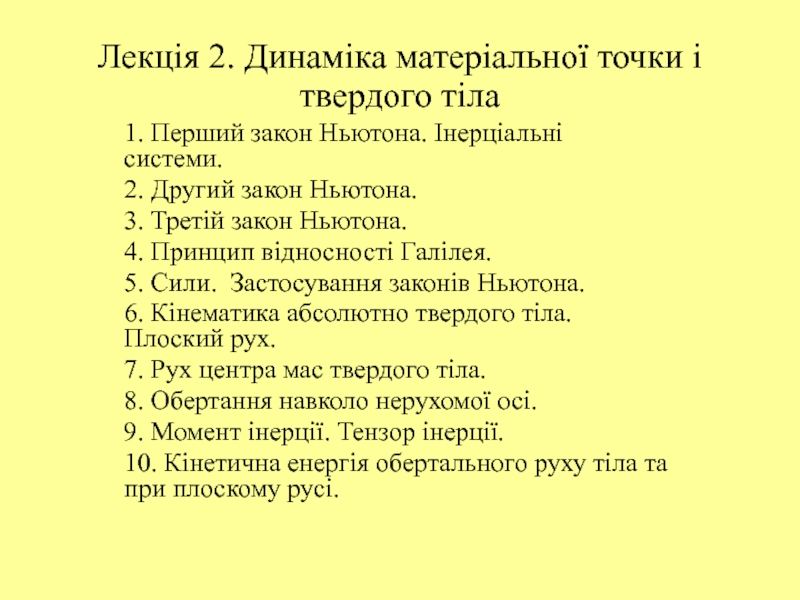
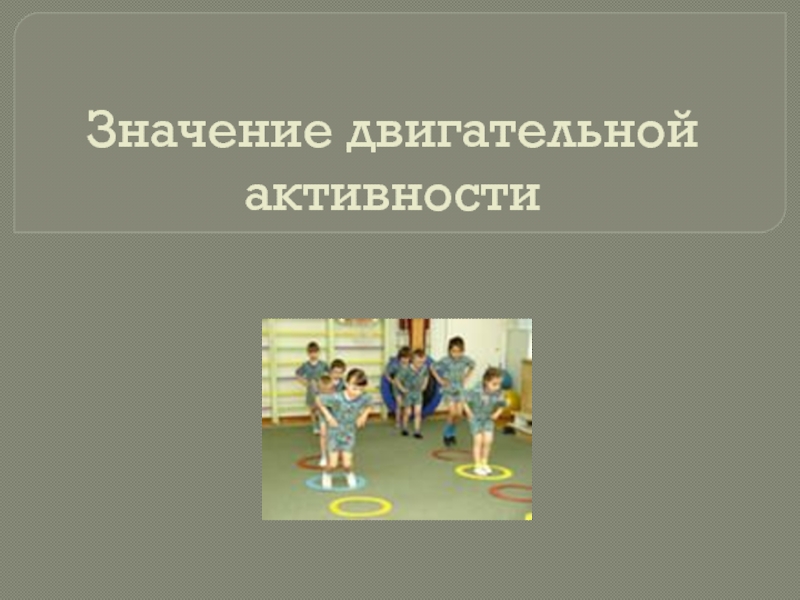


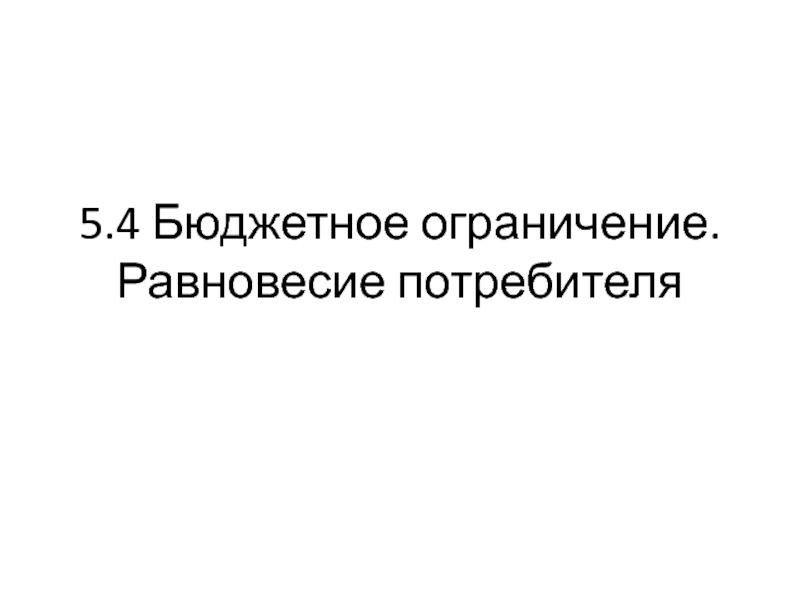
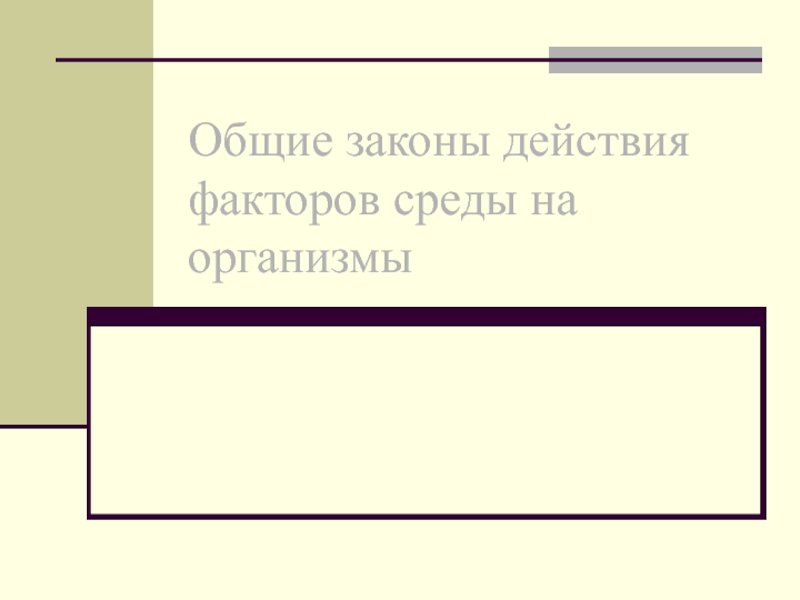
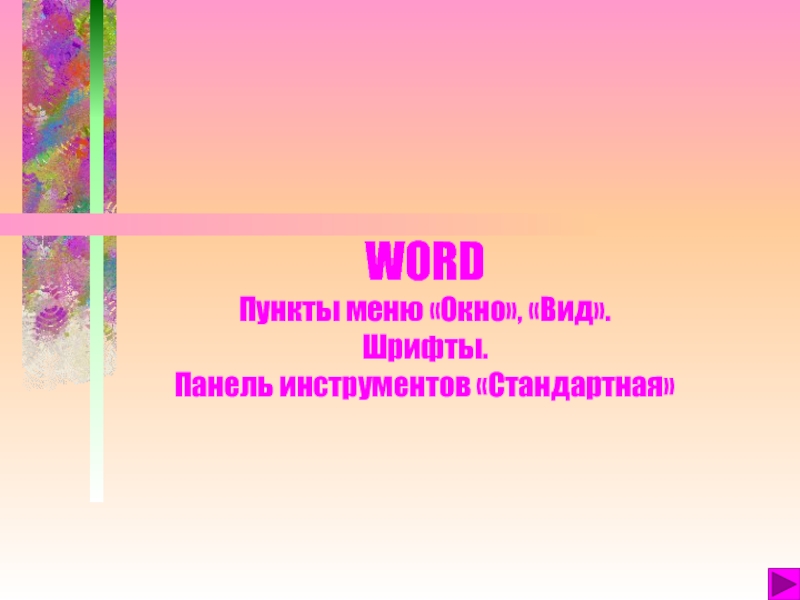
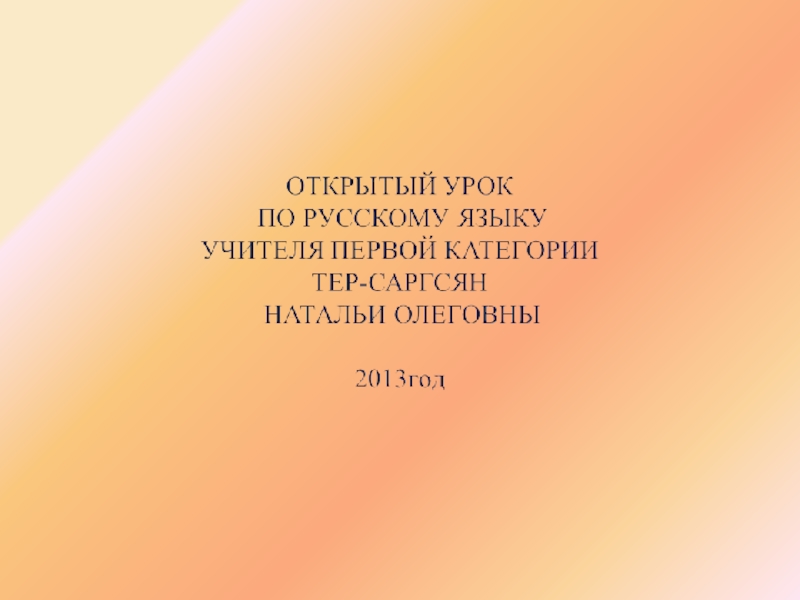
![Автоматизация звука
[ Р ] в слогах, словах, фразе,
предложениях, тексте у детей](/img/tmb/6/577954/93493577f437aaf90501124d2c9eb7d6-800x.jpg)